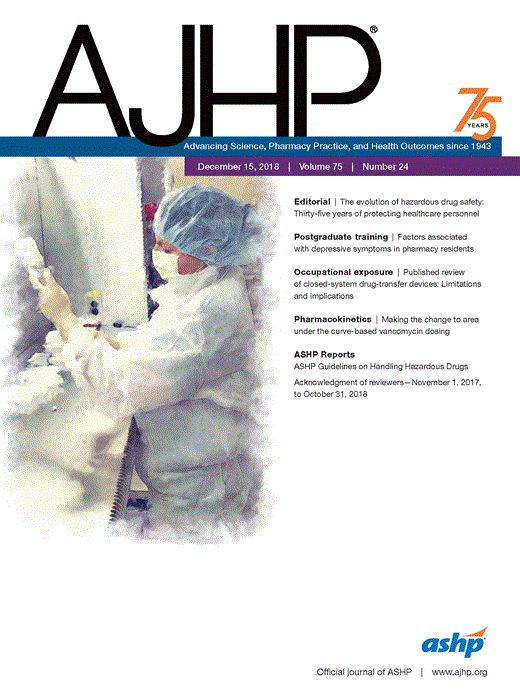-
Views
-
Cite
Cite
Luci A. Power, Joseph W. Coyne, ASHP Guidelines on Handling Hazardous Drugs, American Journal of Health-System Pharmacy, Volume 75, Issue 24, 15 December 2018, Pages 1996–2031, https://doi.org/10.2146/ajhp180564
Close - Share Icon Share
Extract
ASHP published its first guidance on hazardous drugs (HDs) in 1983 as part of the 1983–84 ASHP Practice Spotlight: Safe Handling of Cytotoxic Drugs.1,2 This was followed by technical assistance bulletins in 1985 and 1990 and the ASHP Guidelines on Handling Hazardous Drugs in 2006.3–5 The 2006 guidelines were created to harmonize with the National Institute for Occupational Safety and Health (NIOSH) Alert: Preventing Occupational Exposure to Antineoplastic and Other Hazardous Drugs in Health Care Settings issued in 2004.6 The ASHP 2006 HD guidelines were current to 2005.
In 2007, the United States Pharmacopeial Convention revised United States Pharmacopeia (USP) chapter 797 (Pharmaceutical Compounding—Sterile Preparations)7 to harmonize with the NIOSH 2004 Alert. It became effective May 1, 2008, establishing many of the NIOSH recommendations as enforceable requirements. On February 1, 2016, USP published a new general chapter, chapter 800, Hazardous Drugs—Handling in Healthcare Settings.8 Unlike the other publications regarding HDs noted above, USP chapter 800 is not a guidance document but an enforceable standard, containing both best practice recommendations and mandates for reducing the occupational exposure of healthcare workers who handle nonsterile and sterile HDs. The standards set by USP chapter 800 are applicable in all settings in which HDs are compounded and administered and where healthcare workers may come into contact HD residue, not just hospitals and clinics.






Comments